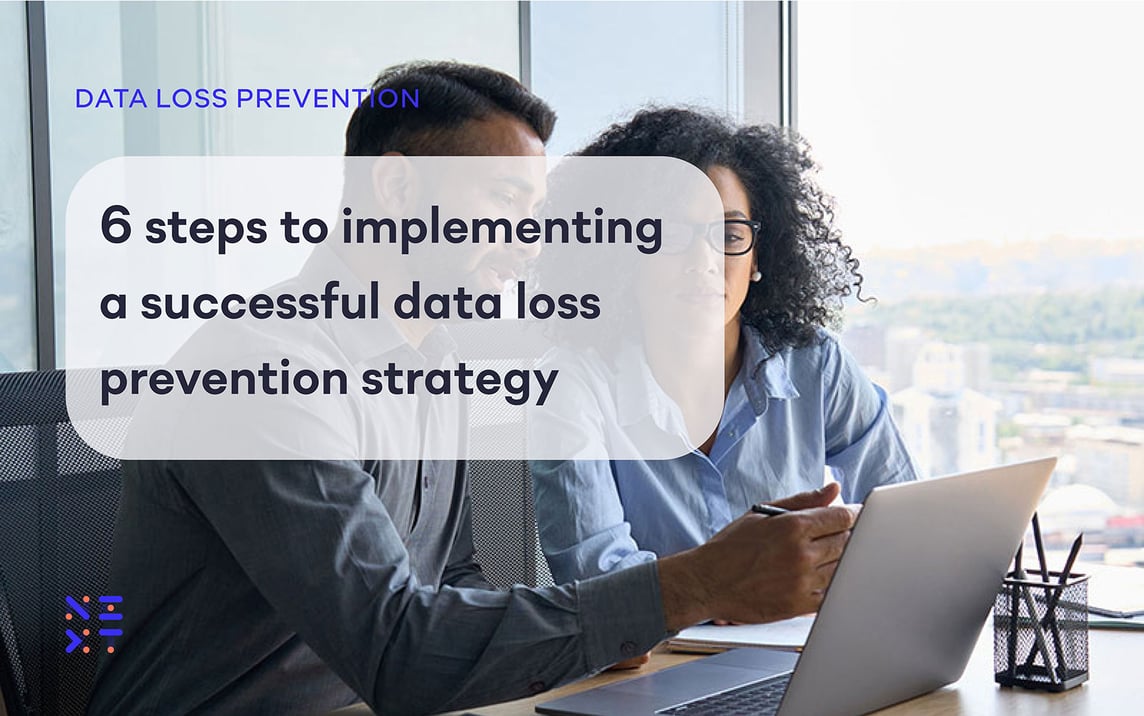Fortinet Acquires Next DLP Strengthens its Top-Tier Unified SASE Solution
Read the release

Data-driven companies need a data loss prevention (DLP) strategy to protect their valuable information. Enterprises must guard against data being compromised, lost, or misused deliberately or accidentally. The same level of damage can be caused by a data breach initiated by a cyberattack or one triggered by an employee’s accidental disclosure of intellectual property via unencrypted email.
Implementing a successful DLP strategy requires a methodical approach that addresses the needs of the business and the type of data it gathers, stores, and processes. The following steps illustrate the best practices that should be part of a company’s DLP strategy.
In this article:
A company’s data handling policy must align with business requirements and reflect its information resources. If a company has a typical mix of data assets, it may be able to use a data handling policy template that can be tailored to the organization’s specific needs.
This policy defines classes of data that require different types of handling to protect the organization. Typically, at least three kinds of data are classified based on the information’s importance and the damage its misuse or loss can cause:
The policy will define how differently classified data elements are handled within the company. For example, it may specify that all high and medium-risk data be encrypted before transmission over public networks. It may restrict the use of sensitive information to a small group of authorized users. The data handling policy is the foundation upon which a DLP strategy is built, so it’s worth taking the time to get it right.
Once a data handling policy has been created, a company’s information resources must be classified. This includes discovering data assets across the entire computing environment so they can be classified.
Legacy DLP solutions required data discovery and classification to be performed manually. However, modern DLP tools like Next DLP’s Reveal automate this process by dynamically discovering and classifying data for enhanced accuracy, eliminating the need for additional classification tools.
Companies must identify situations or activities that present data vulnerabilities. This is often an ongoing activity that evolves as a DLP strategy matures or business requirements change. The discovered vulnerabilities offer focus points for enforcing the data handling policy.
Examples of data vulnerabilities include:
The next step of the DLP strategy addresses these vulnerabilities.
The main purpose of a data loss prevention strategy is to enforce the company’s data handling policies. A reliable DLP solution should be capable of enforcing the policy through the infrastructure. It should be equally effective in handling newly created data, data residing in legacy systems, and data recently ingested into the environment.
Automated enforcement will perform activities to protect data before it is lost or misused.
Examples of the enforcement of a data handling policy include:
Continuous monitoring of data movement is critical for a successful DLP strategy. Every time data is exchanged, transferred, or accessed, it should be subject to the data handling policy. This includes all internal and external uses of data resources.
Employees should be provided with ongoing education regarding the enterprise data handling policy and their role in protecting information resources. Ideally, a DLP solution offers real-time guidance when a DLP policy violation occurs so the individual understands how they need to modify their behavior in the future.
Next DLP offers customers a human-centric DLP solution that discovers risks, remediates them by enforcing a data handling policy, and educates its users. Our Reveal product is a cloud-native solution that is easy to install and use. It provides immediate results with configurable data handling policies and machine learning, provides smart remediation and enforces the policy even when computers are disconnected from the network.
Reveal employs lightweight agents for Windows, Linux, and macOS computers that won’t impact performance or productivity. Real-time, incident-based training is also furnished to employees to help improve their understanding of the data handling policy.
Contact the Next team or book a demo to see how easy it is to get started with a successful data loss prevention strategy.
A DLP strategy prevents the loss, misuse, or unauthorized access of sensitive information. The strategy requires a combination of policies, technology, and processes to detect and prevent data breaches. The goal is to avoid data breaches, keep organizations compliant, and improve data visibility at scale.
Data loss prevention policies should be unique to each organization, but they should all include these elements:
Threats are always changing, but some of the most common vulnerabilities today include:
A reduction or lack of breaches indicates that your plan is working. You can also assess the success of a DLP strategy by:

Blog

Blog

Blog

Blog

Resources

Resources

Resources

Resources
